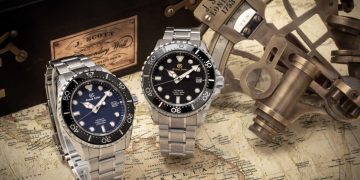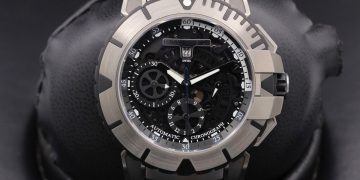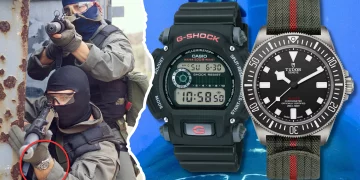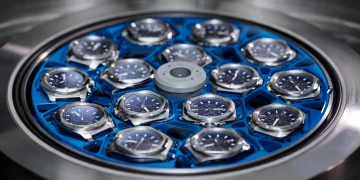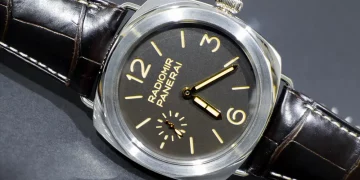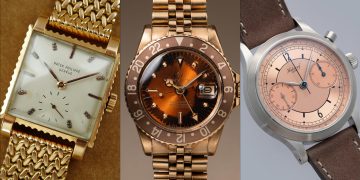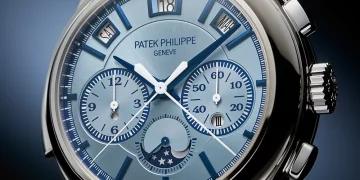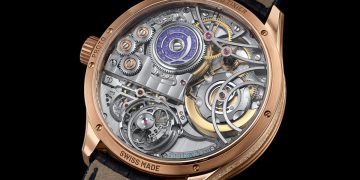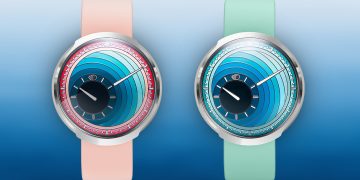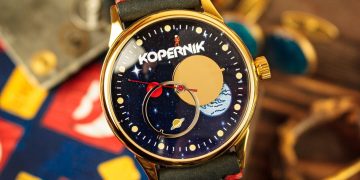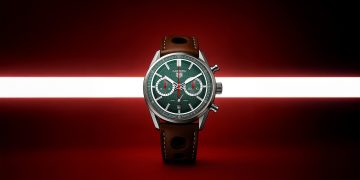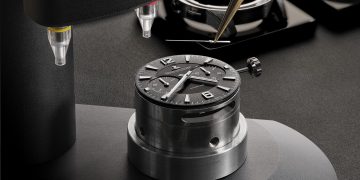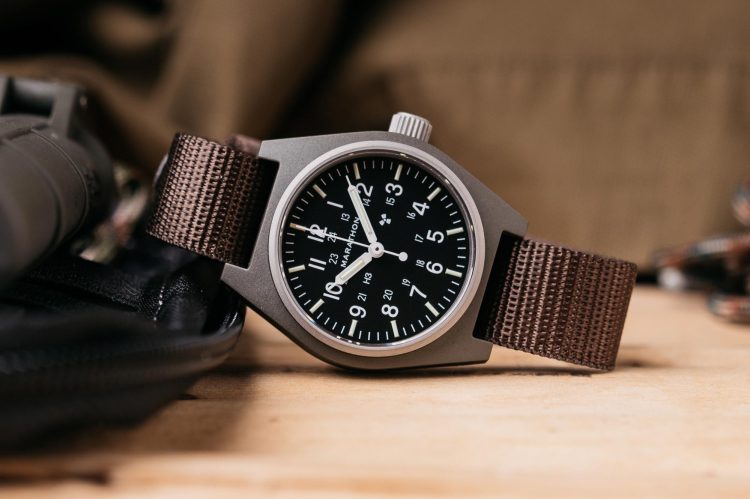In the world of horology, Seiko is a household name, known for producing high-quality timepieces that span a range of styles—from luxury watches to durable sports models. However, the company’s path to success was not a straightforward journey. One of the most pivotal moments in Seiko’s history came during World War II, a time of global upheaval that brought about profound changes to the world of watchmaking. Through an unexpected military contract during the war, Seiko not only survived a difficult period in its history but also laid the foundation for many of the innovations that would shape its future. This article delves into how Seiko’s pivot to military watches during WWII played a crucial role in the brand’s survival and how the lessons learned from wartime innovation influenced the company’s later consumer models.
The Early Struggles of Seiko: A Company at a Crossroads
Before World War II, Seiko was already a well-established name in the Japanese watchmaking industry. Founded in 1881 by Kintaro Hattori, the company initially operated as a small clock and watch repair shop. By the early 20th century, Seiko had expanded its operations and was producing its own timepieces. However, while Seiko had established itself as a reputable watchmaker, it was still a relatively small player on the global stage, struggling to compete with the established European brands.
In the years leading up to WWII, Japan, like much of the world, was experiencing political and economic turmoil. The watchmaking industry, which was heavily reliant on European models and techniques, faced challenges in maintaining production quality and market relevance. Seiko, still a young brand, was finding it increasingly difficult to compete internationally.
Despite these early struggles, Seiko had the ingenuity and resilience necessary to weather the storm. During the war, the company’s fortunes would take a dramatic turn, thanks to an unexpected contract from the Japanese military.
Seiko and WWII: The Unexpected Military Contract
As Japan entered World War II, the need for reliable and precise instruments became critical. Watches were no exception. The Japanese military required watches that could withstand harsh conditions, offer precise timekeeping, and be durable enough to endure the rigors of combat. Seiko, already experienced in producing high-quality timepieces, found itself in a prime position to fulfill these needs.
In 1939, Seiko was awarded a military contract to produce watches for the Imperial Japanese Army and Navy. This marked a significant turning point for the company, as it pivoted its production focus toward military-grade timepieces. Seiko began manufacturing wristwatches and pocket watches for soldiers, engineers, and other personnel in various military sectors. The company’s experience in precision engineering, which had been honed through years of making clocks and consumer watches, made Seiko an ideal candidate to take on such a task.
The military watches Seiko produced during the war were characterized by their ruggedness, reliability, and functionality. They were designed to meet the demanding needs of soldiers in the field. Seiko used durable metals and strong materials to ensure that the watches could withstand the harshest conditions, including extreme temperatures, moisture, and vibration. These timepieces were not meant to be stylish or luxurious; their sole purpose was to keep time with utmost accuracy, which was critical for military operations.

Wartime Innovation: How Military Contracts Shaped Seiko’s Future
The military contracts Seiko received during World War II not only helped the company survive the war but also provided invaluable experience that would influence its post-war consumer models. The lessons Seiko learned while producing military watches were instrumental in shaping the company’s technological innovations and its later success in the global market.
One of the most significant impacts of Seiko’s involvement in the military watch market was the company’s focus on durability and precision. The military watches Seiko produced were subjected to rigorous tests and had to perform reliably in extreme conditions. These tests led to the development of new materials and techniques that Seiko would later incorporate into its civilian timepieces.
For example, Seiko developed new movements and mechanisms that were designed to be highly accurate, even in the most challenging environments. The company also focused on creating watches that could withstand the physical demands of daily life, such as water resistance, shock resistance, and long-lasting power reserves. These innovations would later be incorporated into Seiko’s civilian models, making them more durable and functional than many of the timepieces produced by other brands at the time.
Additionally, the military watches produced by Seiko during WWII were often equipped with features that would become standard in later consumer models. For instance, Seiko’s military watches included luminous dials and hands, which were critical for soldiers who needed to read the time in low-light conditions. This feature, which Seiko perfected during the war, would later become a hallmark of the company’s popular wristwatches, particularly its dive watches.
The Post-War Boom: Seiko’s Transition to Civilian Watches
After WWII ended, Seiko’s military contracts came to an end, but the company had gained invaluable experience during the war. In the post-war years, Seiko transitioned back to civilian watchmaking. However, the lessons learned from military production would continue to shape the company’s designs and innovations. Seiko quickly established itself as a leading brand in the global watch market, and its reputation for durability and precision grew.
One of Seiko’s first successful post-war innovations was the launch of its Seiko 5 line in 1963. The Seiko 5 was a line of affordable automatic watches that incorporated many of the durability features Seiko had perfected during its time producing military watches. The Seiko 5 featured a robust automatic movement, a day-date complication, and water resistance—all of which were designed to meet the demands of active individuals. The Seiko 5 became an instant success, both in Japan and internationally, and helped establish Seiko as a force to be reckoned with in the world of horology.
In the decades that followed, Seiko continued to innovate, introducing groundbreaking technology like the Quartz movement in 1969 with the Seiko Astron. The advent of quartz technology revolutionized the watch industry, and Seiko’s early adoption of this technology solidified the brand’s place as a pioneer in watchmaking. Additionally, Seiko’s dive watches, particularly the Seiko Turtle and Seiko Pogue, became popular among collectors and adventurers, thanks to their durability and precision—qualities that were honed through Seiko’s military experience.
The Seiko Military Watch Legacy: A Lasting Impact
Seiko’s military watch legacy continues to influence the brand to this day. The company’s commitment to producing high-quality, durable watches for demanding environments remains a core tenet of its philosophy. Seiko’s watches are still prized by collectors and enthusiasts for their combination of affordability, durability, and precision.
One of the most notable legacies of Seiko’s military watch experience is the Seiko Divers collection, which includes watches designed for professional divers and adventurers. These timepieces are engineered to withstand the pressure and conditions of underwater exploration, much like the military watches Seiko produced during WWII. The Seiko Prospex line, for example, is renowned for its ruggedness and reliability, making it a favorite among divers and outdoor enthusiasts.
In addition to its rugged dive watches, Seiko’s military influence is also evident in its field watches. These timepieces are inspired by the utilitarian designs of Seiko’s WWII military watches, with simple, legible dials and robust cases built for adventure and practicality.
How Seiko’s Wartime Innovation Changed the Watch Industry
The innovations Seiko introduced during its time as a military contractor not only transformed the brand but also had a profound impact on the watch industry as a whole. Seiko’s focus on precision, durability, and functionality set a new standard for watchmaking, particularly in the areas of sports, aviation, and diving watches.
Moreover, Seiko’s commitment to technological advancement and its willingness to experiment with new materials and movements laid the groundwork for many of the industry’s most significant innovations. The company’s embrace of quartz technology, its introduction of the first automatic chronograph, and its leadership in dive watch design were all influenced by the company’s wartime experiences.
Conclusion: Seiko’s Resilience and Innovation in the Face of Adversity
The unexpected military contract Seiko received during WWII was a turning point for the company, providing it with the financial stability and experience needed to survive a tumultuous period in its history. The innovations Seiko made while producing military watches laid the foundation for its later success in the civilian market. From rugged dive watches to precision chronographs, Seiko’s commitment to durability, accuracy, and functionality continues to define its legacy today.
The company’s ability to pivot during a time of crisis and adapt its technologies to meet new challenges demonstrates the resilience and ingenuity that have become synonymous with the Seiko brand. The lessons Seiko learned during its time producing military watches were instrumental in shaping the brand’s future and its lasting impact on the watch industry.


